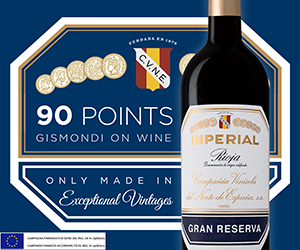Valle de Aconcagua is a region—or, more accurately, subregion—of contradictions.
It is part of the larger Aconcagua regional DO, one of only six in Chile. Although Valle de Aconcagua is by far the smallest of its three subregions, it disproportionately produces some of the country’s top wines.
Even its name isn’t exactly what you expect. In the distance, you can see the towering Aconcagua mountain, the tallest in South America. But Valle de Aconcagua is named for the Aconcagua River, which traverses the valley from the Andes to the Pacific Ocean.
The river's path helps explain why Valle de Aconcagua is one of the warmest and coolest sub-regions in Chile. Since 2011, the country’s river valleys have been cross-sectioned into three additional designations: Costa (influenced by the coast), Andes(influenced by the Andes), and Entre Cordilleras (in between the two). Valle de Aconcagua notably exaggerates these differences.
The valley opens to the ocean, and cooling sea breezes mean coastal vineyards are well-suited to chardonnay, sauvignon blanc, and pinot noir. These wines have a distinct cool-climate character backed by a saline minerality. Errazuriz’s 2022 Aconcagua Costa Chardonnay is bright, citrusy, and sapid, while the 2021 Aconcagua Costa Pinot Noir is pure and restrained, with crunchy red berry fruit.
Further inland, Valle de Aconcagua begins to follow a meandering path to the Andres, bending and curving as it moves through the Coastal Range. It provided a myriad of unique mesoclimates depending on the aspect and elevation of the vineyard. It was the foundation for Seña and Eduardo Chadwick and Robert Mondavi's collaborative vision to produce an icon wine in Chile.
Seña reflects the warmth of Valle de Aconcagua but with a retained freshness characteristic of Entre Cordilleras. Nestled in the Coastal Range, it’s planted on an east-facing hillside that reaches nearly 500 metres in elevation. The 2019 vintage of Sena marks its 25th anniversary, and the wine confidently speaks to place like only a true icon wine could.
As the coastal influence dissipates, the heat of Valle de Aconcagua is felt in the Aconcagua Andes. This warmth is captured by Errazuriz’s Aconcagua Alto label and icon wines like Kai (Carmenere) and Don Maximiano (Cabernet Sauvignon-based blend). However, the wines show a balanced ripeness, with a marked shift beginning in 2014 to a fresher style.
Today, Valle de Aconcagua is responsible for some of Chile's best-value wines as well as some of its most expensive. This could be seen as another contradiction. Yet, these wines aren’t expensive for the sake of being expensive. Since its founding in 1870, Errazuriz has a clear understanding of its terroir that allows it to do both.

 quicksearch
quicksearch






